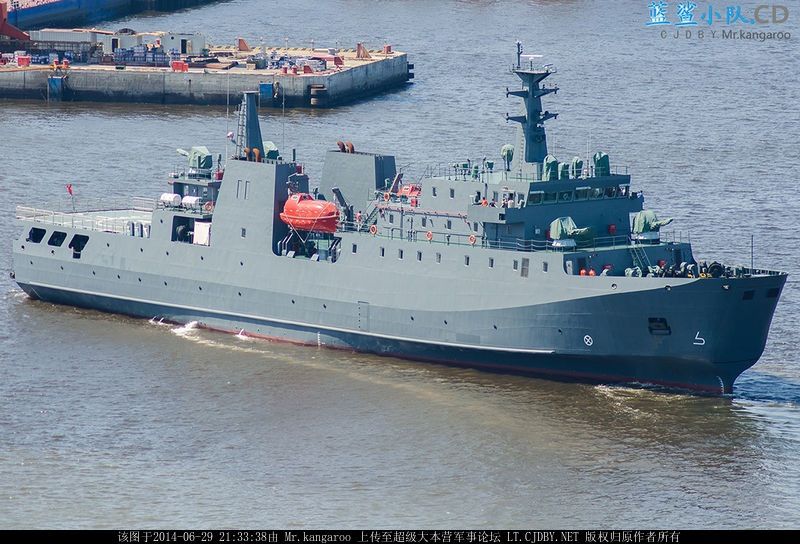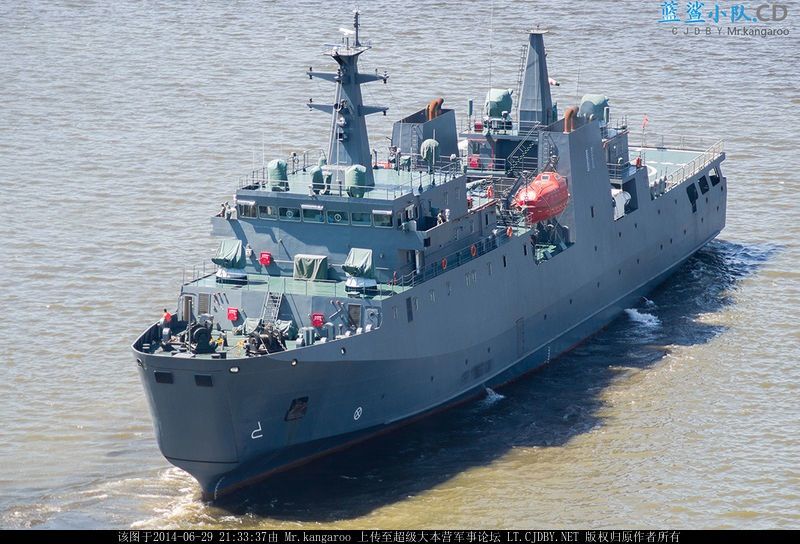You are using an out of date browser. It may not display this or other websites correctly.
You should upgrade or use an alternative browser.
You should upgrade or use an alternative browser.
Chinese shipbuilding industry
- Thread starter tphuang
- Start date
Verum
Junior Member
View attachment 9597
Here's a graph of world commercial shipping order book by main shipbuilding countries (data accurate at end 2013).
Wow, China progressed a lot. But to make the real big money, they really have to get into the LNG and oil tankers. There's too much competition in the bulk container ships, by undercutting competitors drastically lowers profit margins.
antiterror13
Brigadier
one step at a time .... I am sure LNG market will be dominated by the Chinese within 5 years
Just not long ago (10-15 years ago?) the Japanese and SK dominated all the market ... look now
Just not long ago (10-15 years ago?) the Japanese and SK dominated all the market ... look now
Interestingly China making bigger inroads in Gas market than in tanker segment despite greater vessel sophistication. Comes down to supply/demand - all the RoK / JP yards already pretty full and China govt backing push into gas segments - Japan still number 1 for quality but new (non-traditional, mostly Greek) gas players loooking to build cheaply going to China instead.
broadsword
Brigadier
More on China's LNG Carrier building industry
China charts course into LNG shipbuilding
By Geoffrey Murray Source:Global Times Published: 2014-2-10 20:33:01
A huge upsurge in use of liquefied natural gas (LNG) as an energy source is generating demand for a new generation of specialized ships, with China competing hard with Japan, South Korea and even India to build them.
Japan is already the world's largest LNG importer after abandoning the nuclear option following the March 2011 earthquake and tsunami disaster. China and India are also boosting imports; so, global LNG shipments are forecast to grow from the figure of 200 million tons in 2010 to around 360 million tons by 2020.
There are now an estimated 365 LNG carriers on the high seas and there's hardly a single one that is not in constant use. At least another 175 carriers, and maybe even more, will likely be ordered soon.
That's welcome for major shipbuilding nations facing a slowdown in orders for more conventional vessels.
LNG ships are complicated to build and only a handful of shipyards in the world currently possess the necessary expertise. It's worth making the effort however, as a single ship costs around $195 million, at least?double a regular vessel.
One of the most significant developments has been China's emergence. In 2010, it passed South Korea to become the top shipbuilder in terms of number of vessels produced. Increasingly, quality has been added to quantity.
Chinese yards initially struggled to master the technology for building LNG carriers, but have now done so and, last year, achieved an important milestone by winning the first overseas order.?
Shanghai's Hudong-Zhonghua Shipbuilding (Group) Co, subsidiary of China State Shipbuilding Corp, will supply four LNG carriers worth more than $1 billion to joint ventures of Japan's Mitsui O.S.K. Lines and China Shipping Development for use in transporting gas from Australia and Papua New Guinea to China.?
Based on current import growth, China will need another 60 to 65 LNG carriers as soon as possible. The government has approved construction of LNG terminals in Guangdong Province, Fujian Province, Shanghai and Zhejiang Province, and is planning others. Vessels will be built at five designated yards around the country.
Chinese shipbuilders have a built-in advantage as the government insists all the vessels carrying imported LNG must be locally built. The big challenge is now however, whether the yards can expand the small bridgehead in the global market against stiff competition.
Technology is the determining factor. All LNG ships are double hulled and rely on insulation to keep the cargo liquid at around -162 C. The cargo is carried at atmospheric pressure in specially insulated tanks inside the inner hull.
The focus now is on increasing the carrying capacity and creating a more economical propulsion system.
Traditionally, storage tanks have been of the Norwegian-developed?Moss?spherical type, where the rounded spheres protrude above the hull making the ships instantly recognizable. Now, new vertical tanks are being developed in Japan and the US that will increase carrying capacity by 10 to 25 percent.
The other major development area involves the engine. The South Koreans have been doing much work on developing propulsion units that could use a combination of fuel, including reliquefied LNG supplied by the inevitable "boil-off" of stored gas during a voyage. The engines can be adjusted to cope with any fuel ratio.
Another approach is electric propulsion. Until now, Chinese-built LNG carriers have relied on either steam turbines or two-stroke engine technology, but Hudong-Zhonghua Shipbuilding is building six ships using dual fuel engines developed by the American firm GE Technology that are more efficient and environmentally friendly.
Both Japanese and South Korean shipping companies and shipyards are looking to the LNG boom to restore some of their former dominance eroded by China.
Japanese shippers already operate about half the LNG carriers now, and plan to add 90 more ships by 2020 to increase the dominance. This will help cope with exports of North American?shale gas to Japan from as early as 2017, and LNG from projects involving Japanese companies in Australia and Mozambique.
One assumes virtually all the ships will be built in Japanese yards.
It's worth noting however, that South Korea's LNG specialist shipyards are doing well in winning orders from European shipping companies worth several billion dollars.
India, meanwhile, is hoping to break into the shipbuilding market due to an upsurge in its own LNG imports, but could be handicapped if it cannot offer its shipyards the type of government subsidies used by its rivals to promote the industry.
The author is a lecturer with China Foreign Affairs University. [email protected]
asif iqbal
Banned Idiot
PLA navy ship
Well I think they might need a few hundred of these


Well I think they might need a few hundred of these


broadsword
Brigadier
What kind of ship is that with that kind of bow?
What kind of ship is that with that kind of bow?
To me it looks like a tank and vehicle transporter for the army.
The bow carries a ramp for Ro-Ro.
asif iqbal
Banned Idiot
I am really not sure how one ship like this can help the PLA
What they need are 70,000 ton Algol Class style Ro-Ro ships and a great many of them unless this is a training ship even then it's too small
What they need are 70,000 ton Algol Class style Ro-Ro ships and a great many of them unless this is a training ship even then it's too small
youngtomous
Junior Member
I am really not sure how one ship like this can help the PLA
What they need are 70,000 ton Algol Class style Ro-Ro ships and a great many of them unless this is a training ship even then it's too small
I want to declare that this vessel is not belong to NAVY, it is belong to the ARMY ,mainly used in the river like Yantze ,so for this goal it was enough. The PLAAF also has some small supply ships.

